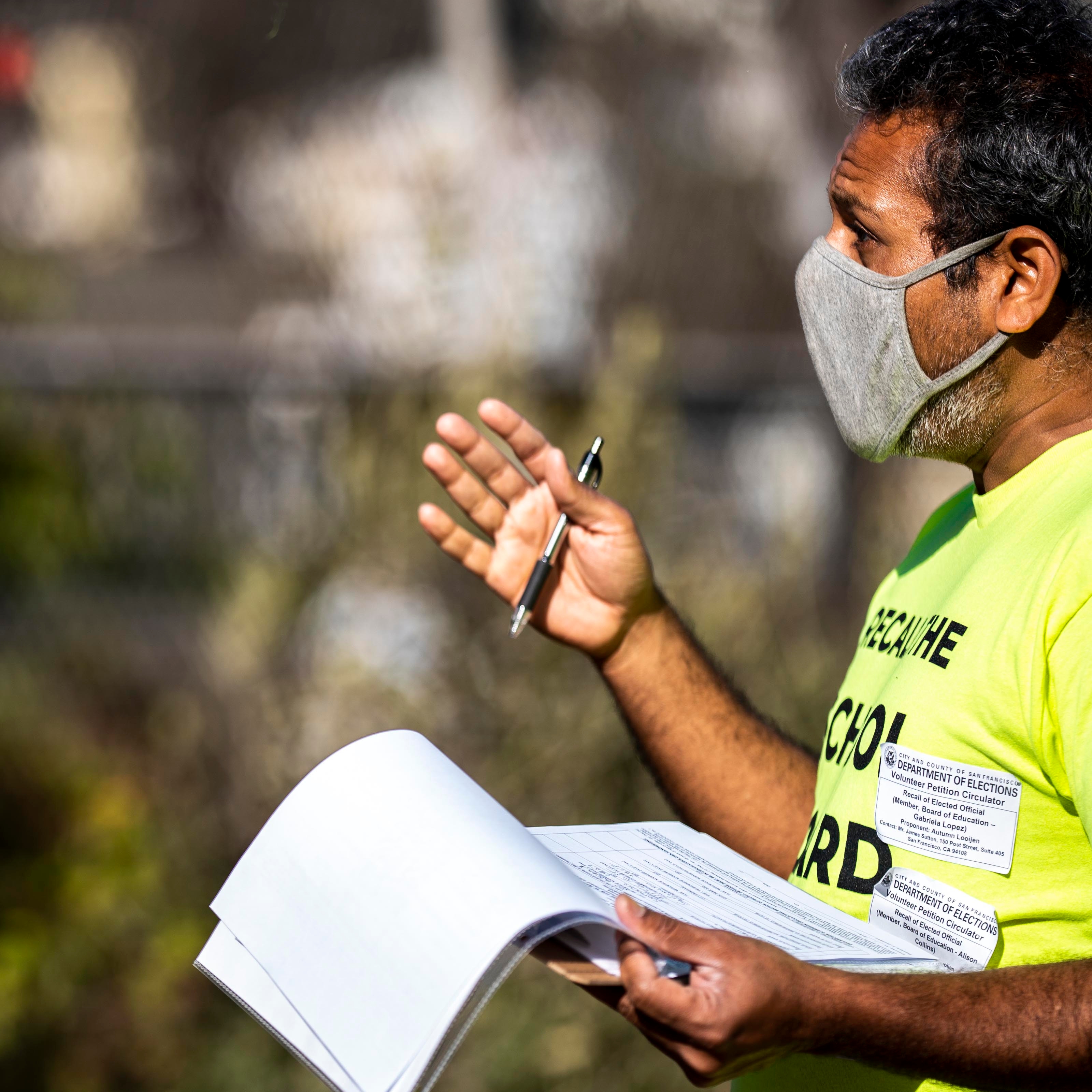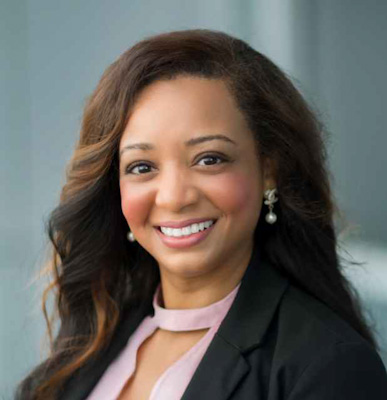Supreme Court offers possible road map for schools to diversify top programs

Siva Raj says San Francisco's new model for choosing students for the district's selective schools shows promise. (Melina Mara/The Washington Post)
When the Supreme Court allowed an elite magnet school in Northern Virginia to continue using a new system for admissions aimed at diversifying its student body last week, other schools were watching.
Across the country, districts have been unsettled by the makeup of their top academic programs, especially scant numbers of Black and Hispanic students, and many have implemented new admissions systems. But a question loomed: Would this be legal given the Supreme Court’s decisions, including its ruling last year outlawing affirmative action for higher education?
Now schools may have something of a road map: Taking race into account is verboten, but consideration of neighborhood, socioeconomics and other factors might be all right.
“It’s a huge relief,” said Halley Potter, senior fellow at the Century Foundation, which advocates for school integration policies. “It means that districts around the country can continue to use a full set of tools around socioeconomics to create diverse school environments.”
This approach also may represent the future for colleges and universities, as they hunt alternative routes to building diverse classes following the high court affirmative action ruling.
“All those universities, they want to promote diversity, but they also don’t want to be the defendant in that future case,” said Sonja Starr, a law professor at the University of Chicago who closely followed the Virginia case.
K-12 school districts have been grappling with how to foster diversity without overtly using race since 2007, when the Supreme Court ruled that school districts may not use race as a factor in assigning students to schools. But until last year, colleges were allowed to consider race in admissions decisions.
Starr predicted that many colleges will consider similar race-neutral policies that factor in socioeconomics like many K-12 districts have done—now with the implicit blessing of the Supreme Court.
On Tuesday, the court announced that it would not review a challenge to the admissions system used by Thomas Jefferson High School for Science and Technology, a prestigious magnet school in Fairfax County, Va., passing up an opportunity to consider and possibly strike down the district’s effort to diversify the school.
For years, the school, known as TJ, offered admission based on a notoriously difficult entrance exam, and its student population was overwhelmingly Asian, with few Black or Hispanic students. In 2020, the district implemented a system that removed the test and an entrance fee, and reserved seats for students from every Fairfax middle school—geographic diversity that also resulted in more racial diversity.
A parent lawsuit alleged that the policy discriminated against Asian American students. A lower court judge sided with the parents, calling it an illegal act of “racial balancing.” But an appellate court reversed the decision. The parents’ coalition then appealed to the Supreme Court.
The case has been carefully watched by school integration advocates across the country, who feared that today’s conservative court might strike down efforts at diversity even if they did not overtly consider race.
Richard D. Kahlenberg, who has long urged schools to use socioeconomic factors - but not race - in admissions, was both relieved and encouraged by last week’s court action. A decision disallowing racially neutral plans simply because one of their goals was racial diversity would have been “a disaster,” he said. It could have affected not just elite magnet programs like TJ’s, but 171 school districts across the country identified as considering socioeconomics in student assignment policies.
“If you’re going to have a true meritocracy—finding the most talented students—you have to consider not only their test scores and academic achievement, but also what hurdles they’ve had to overcome in life,” said Kahlenberg, an expert witness on behalf of the group that successfully challenged race-based affirmative action policies at Harvard University and the University of North Carolina. “It’s more meritocratic to consider socioeconomics than to simply ignore the realities of the way economic class impacts opportunity.”
In recent years—and particularly during the period of racial reckoning following the 2020 killing of George Floyd by Minneapolis police—school leaders from San Francisco to Boston grew concerned by student demographics at their elite academic programs. But plans to change admission rules have faced legal and political challenges from conservatives and others who argue that such re-engineering amounts to an attack on merit and excellence.
Even efforts to make these programs more economically diverse, critics charge, are actually aimed at racial diversity and are therefore unconstitutional.
In many cases, “these are not really race neutral but done with intent to change racial dynamics at school,” said Erin Wilcox, an attorney with the Pacific Legal Foundation, which filed the suit challenging TJ’s admission policies on behalf of the Coalition for TJ, a parent group.
Wilcox said that despite the setback in the TJ case, her group will continue to press legal challenges to several other similar school policies. While the court declined to hear the challenge to TJ’s program, it did not rule on the merits of the case or offer an explanation for its reasoning.
She was buoyed by a fiery dissent by Justice Samuel A. Alito, joined by Justice Clarence Thomas. Alito called the court’s move “a grave injustice on diligent young people who yearn to make a better future for themselves, their families, and our society” and said TJ’s program offered a road map for schools that wish to unconstitutionally discriminate.
In recent years, conservative challengers to admissions policies have lost a string of rulings as these cases make their way through the courts.
In New York City, for instance, Pacific Legal Foundation is challenging a program that offers an alternative path for admission to the city’s highly sought-after specialized high schools called the Discovery Program. The group lost at the district court level in 2022 and has appealed.
In Montgomery County, Md., the group alleges, among other things, that a plan once used by the school district that considered school poverty level was “intentionally discriminatory” toward Asian American students, whose numbers fell after the change. The suit was dismissed by a federal district court judge, also in 2022, a decision that the foundation is appealing.
And in Philadelphia, a different conservative group—America First Legal, founded by former Donald Trump adviser Stephen Miller—filed a lawsuit in 2022 challenging a change that gave a preference in a lottery for selective schools to those who live in neighborhoods that have sent fewer kids to these schools in the past. The suit charges that the new process is “a blatantly unconstitutional race-based system.” The case is pending in federal district court.
Wilcox said her group is not deterred by losses to date. “We need to keep trying to find the right case,” she said. “This is not an issue we’re prepared to give up on just yet.”
Elsewhere, some of the controversy around these changes is fading as school leaders settle on plans that represent something of a middle ground between focusing only on rewarding excellence and fostering racial and other diversity.
In San Francisco, the school board faced backlash after it shifted admission process for its highly regarded Lowell High School. For many years, the city had relied on grades and an admissions test, but like other districts, it changed course during the height of the pandemic, when it was not possible to administer tests in the same way.
In fall 2020, the district announced that it would use the ranked-choice lottery system for the coming year, the same system used for the city’s other high schools. The move appealed to those concerned about the lack of racial diversity at the school and, following a high-profile incident of racism at the school in early 2021, the board said the change would be permanent. The move was welcomed by many in the Black community but prompted a huge outcry from the city’s Chinese American community, who felt targeted, and from many Lowell alumni and parents, who argued that excellence would be sacrificed.
After a change in the school board, the lottery was scrapped and a merit-based system was restored. But last fall, Superintendent Matt Wayne proposed a middle ground—a lottery among those who have earned a certain grade-point average, which he said could help diversify the school.
It, too, has drawn opponents. But others who fought the earlier change appear open to it.
“This may have promise if it’s done right,” said Siva Raj, who helped lead a successful effort in 2022 to recall three school board members, partly over their handling of this and other racially charged issues.
Raj said that details must be discussed, including what the eligibility cutoff should be and whether it should be based on grades or test scores. And he said the district still has work ahead to repair trust with parents. But the general idea could work, he said.
“There does seem to be an openness to this,” he said. “Actually there’s a lot more consensus here than people appreciate.”
In Boston, too, there have been several shifts in policy affecting the district’s three coveted “exam schools,” which traditionally admitted students based on grades and entrance test scores.
In 2021, the test was removed and applicants were evaluated based on a combination of grades and neighborhood, with high-scoring students from every ZIP code admitted. That system was upheld by the First Circuit Appellate Court in December. The Pacific Legal Foundation is seeking Supreme Court review.
In its decision, the First Circuit Appellate Court wrote that even if racial diversity is a motive, that doesn’t mean a plan is unconstitutional: “There is nothing constitutionally impermissible about a school district including racial diversity as a consideration and goal in the enactment of a facially neutral plan.”
In the meantime, the district moderated its policy, adding the exam back to the process and changing the way neighborhood is considered.
New York City has also seen a push and pull over efforts to diversify sought-after schools. Former Mayor Bill de Blasio’s effort to change how most students are admitted to the city’s high-profile specialized high schools went nowhere. But amid the pandemic, his administration made changes to how students were chosen for about 100 other selective high schools across the city.
Before the changes, these schools were each allowed to set their own criteria for admissions, which could include test scores, grades, attendance records and other measures. Under de Blasio, a standard system was implemented where all students who had grades averaging at least 85 on a 100-point scale were allowed to enter a lottery, with admission chosen randomly from that group.
Under that system, about 60 percent of eighth-graders qualified, which critics said was not selective enough. Then in fall 2022, a new administration kept the same approach but raised the threshold so students must have A averages and be in the top 15 percent in their school or citywide.
“What I’m trying to do is to be responsive to what the community is saying that they want,” Chancellor David C. Banks said at the time.
Nyah Berg, executive director of New York Appleseed, who has advocated for integration and diversity programs, said even with Banks’s changes, she feels pretty good about where high school admissions stand.
“From where we began there have been major changes, and I am very happy about that,” she said. She said she would not want anyone to feel like the work is done, but added: “These compromises are good and consistency and stability are especially good for students and families. … It’s definitely setting into a sustainable model.”



